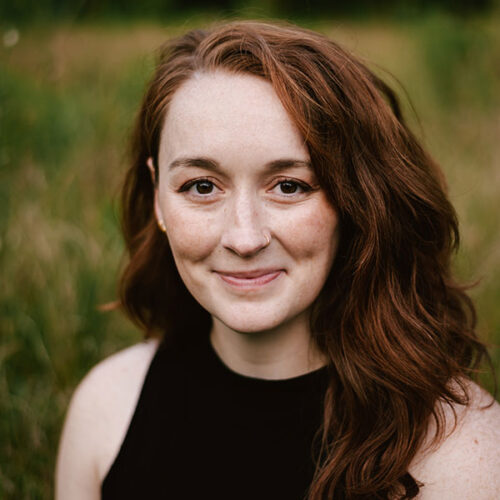Degrees
- B.A. The College of Wooster, 2016
- M.S. Miami University 2020
Emily Baird is a dancer, choreographer, and educator originally from Steubenville, Ohio. She
holds a B.A. in Theatre and Dance from The College of Wooster, where she choreographed
more than six original works for the college’s Dance Company and worked as a lighting
designer. She is also an alumna of the American Dance Festival Six Week School, where she
performed in both the International Choreographer’s Residency Concert and the Student
Concert.
After graduation, Emily moved to Chicago, where she worked as a dance instructor,
then attended Miami University to earn a M.S. in Kinesiology & Health, where her thesis
research investigated the role of body awareness in collegiate modern and contemporary
dancers. Professor Baird’s research interests focus on the intersections of dance, kinesiology,
and music, and how these intersections can create meaning for both artist and audience. She is
also the founder and artistic director of Drift Dance Collective, a dance company focused on
multimedia performance, outreach, and accessibility.
Although Professor Baird’s primary style is modern, she also has experience in contemporary,
floorwork, ballet, contact improvisation, and various somatic techniques. She is a registered
yoga teacher (RYT-500®), and prioritizes a focus on functional anatomy throughout her dance
classes.
- Fundamentals for the Performer
- Modern Dance Technique
- Choreography
- Creative Dance Lab
- Introduction to Contemporary Floorwork
- Contemporary Dance History
- Dance in World Cultures
- Dance-Based Body Awareness
- Dance for Social Change
-
“An Attitude of Openness: Adapting Body Neutrality for Performers,” co-authored with
Kerstin Vaughn. Feminist Pedagogy, Volume 5, Issue 2. February 2025. -
“5,6,7,8, Ready to Evaluate! Physical Therapy Evaluation Considerations for Dancers”,
co-authored with Maria Witt-Kelly. Conference presentation, Summa Health Sports
Medicine Symposium in Akron, OH. February 2025. -
“A Qualitative Investigation of What ‘Body Awareness’ Means to Dancers at a Public Midwestern University.” Journal of Dance Education, volume 22, issue 2, 2022.
- Book review of Dance & Activism: A Century of Radical Dance Across the World, by Dana Mills. Theatre Topics, volume 32, no. 1, 2022, 42-43.

